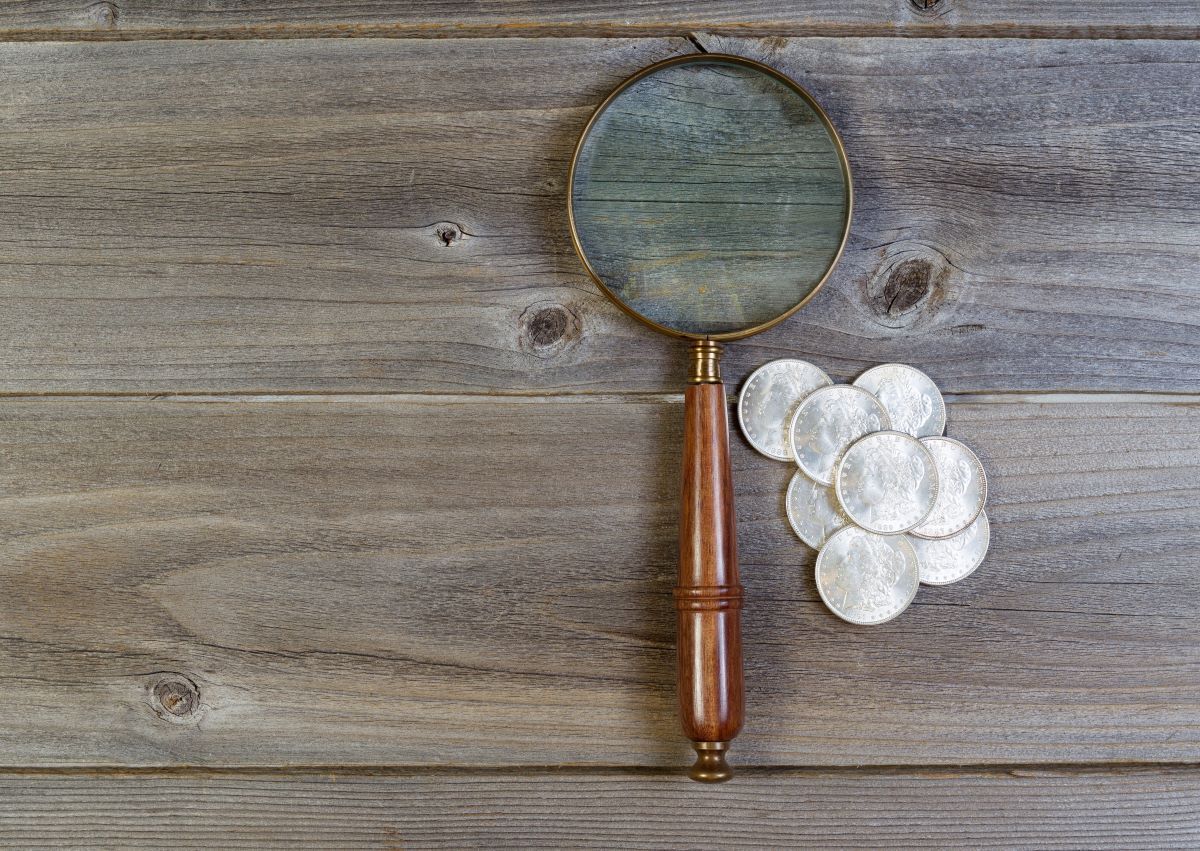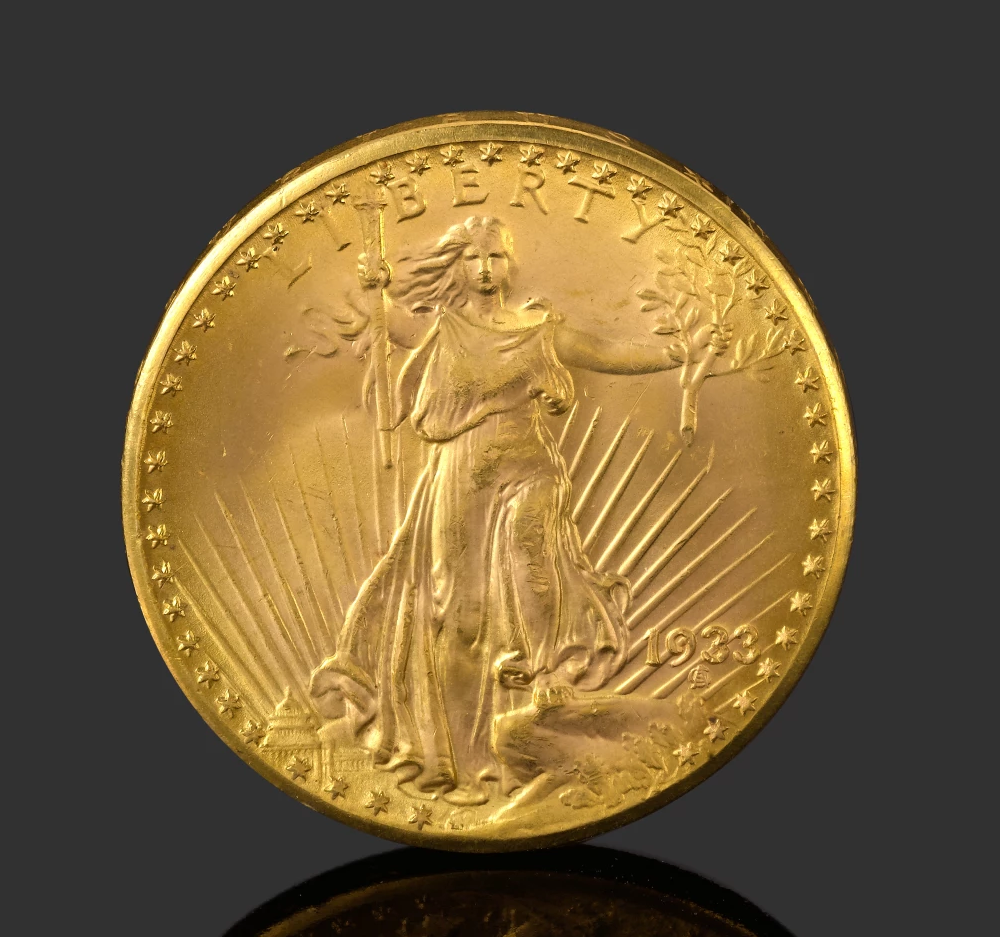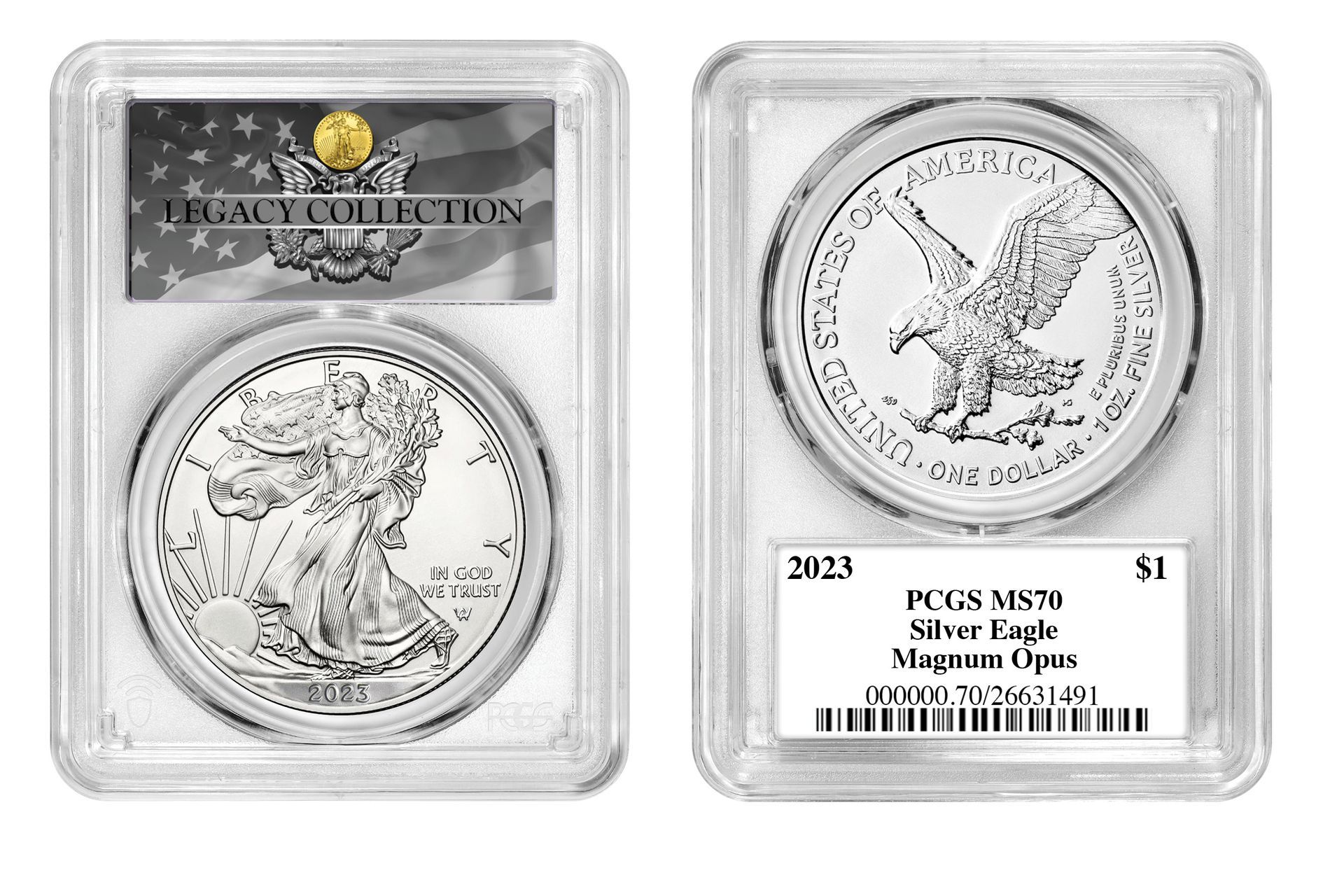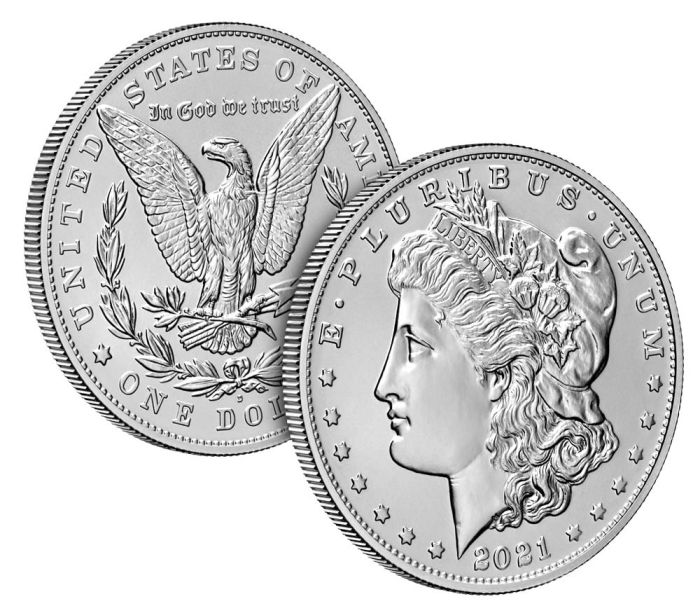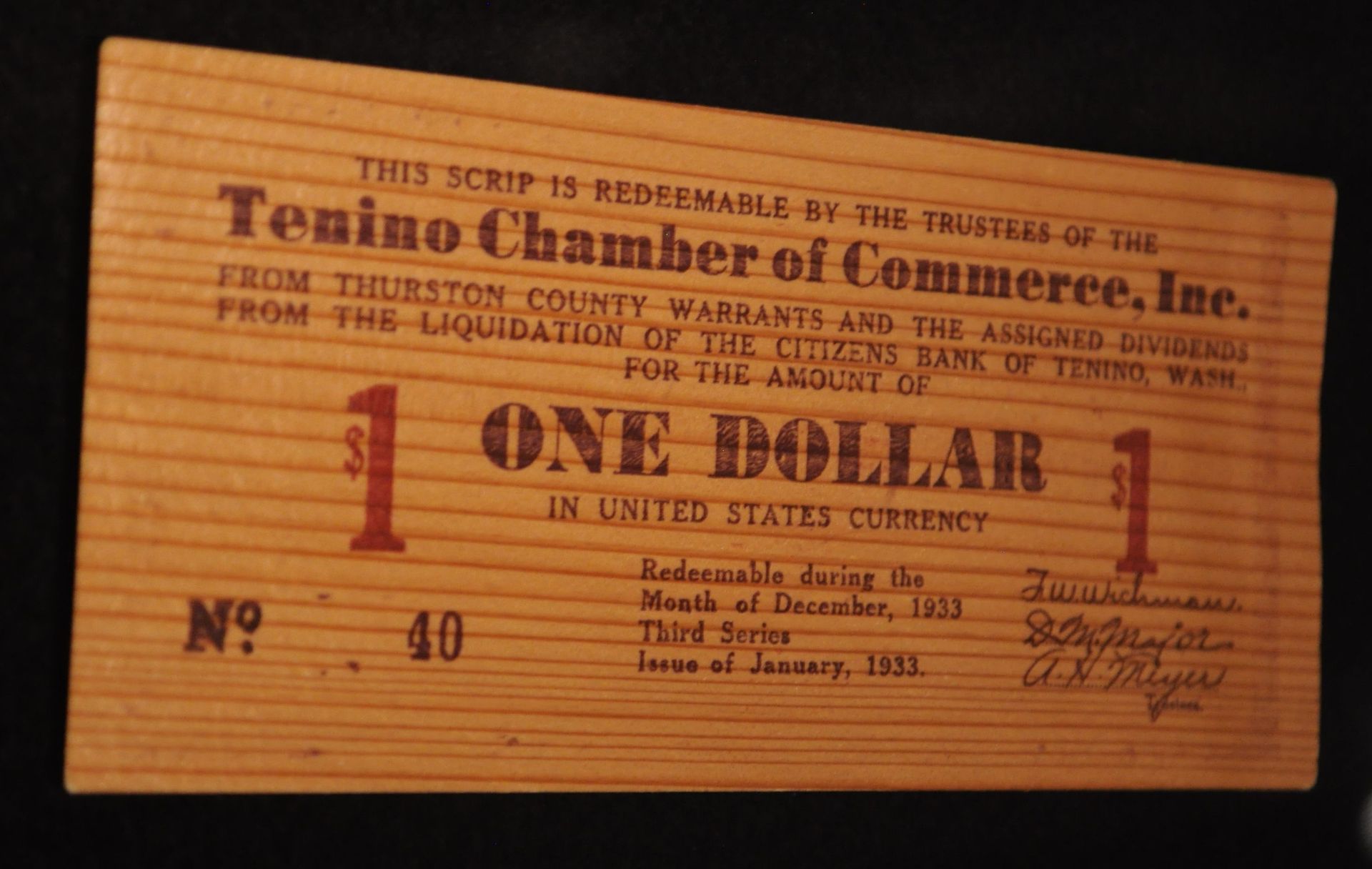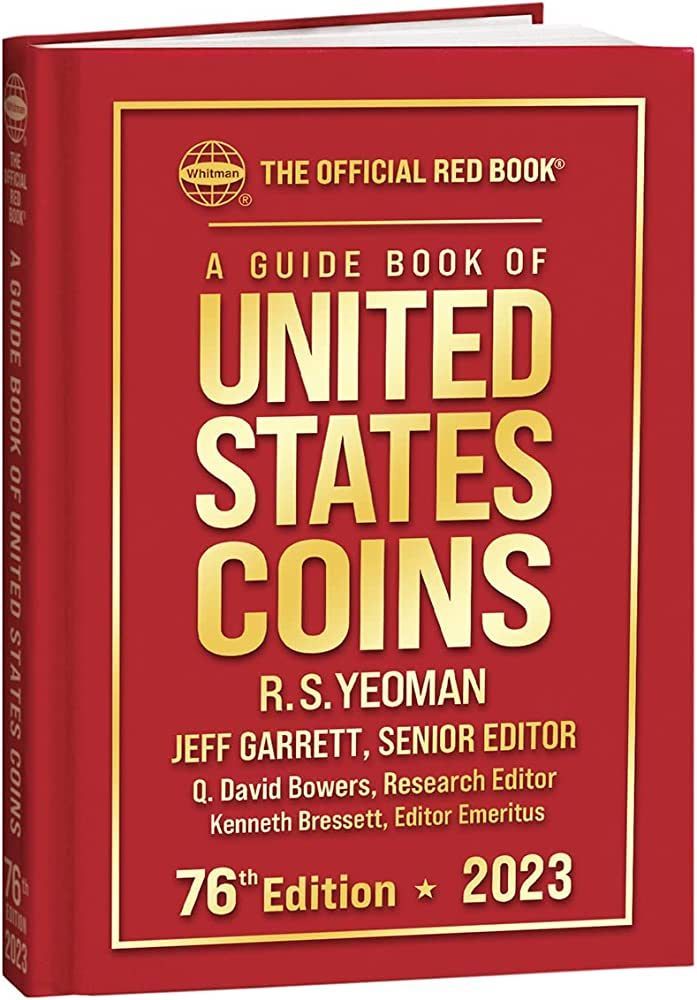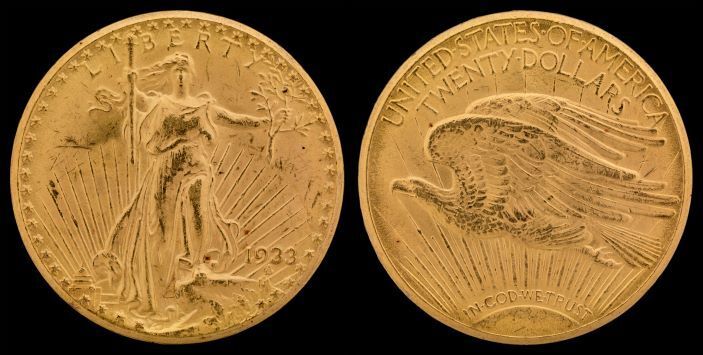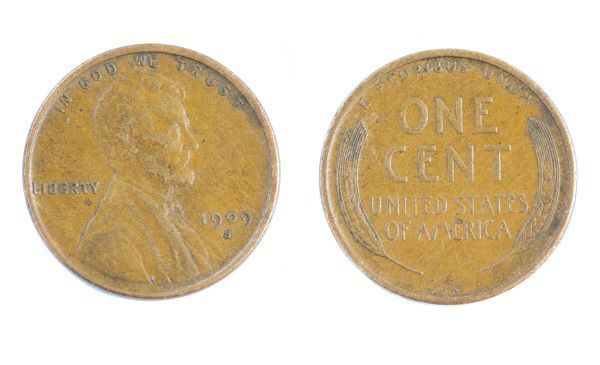
So you've been bitten by the coin collecting bug, huh? Picture this, your heart's racing as you hold a glimmering piece of the past, feeling the ridges, the weight, the absolute thrill of possessing a little something legendary in your palm. It's more than just a hunk of metal, right? It's a story, a secret, a chunk of history that's travelled across centuries, oceans and innumerable hands, until it's found its way into yours. Goosebumps, I tell ya!
And what if, and bear with me here, that unassuming coin you picked up at a garage sale or inherited from ol' Uncle Joe, what if it turned out to be one of those hallowed rarities whispered about in numismatics circles? The ones that make collectors go weak at the knees and auctioneers go through the roof? I know, you're probably thinking, "Dream on!" But hey, stranger things have happened!
Buckle up, friends, we're about to delve into a world where copper and silver hold tales of intrigue, mistakes worth millions and unlikely treasures. We're about to count down the top 15 most famous coins in U.S. history. These are the elusive unicorns, the legends of legends that have set the coin world ablaze. Intrigued? Course you are. Let's dive in!
1909-S VDB Lincoln Cent: A Coin with a Tale as Intriguing as its Value
Historical Background: A Symbol of the Man Himself
Step into the shoes of an early 20th-century American, when the face of President Abraham Lincoln started to grace the humble penny. Commemorating the centennial of his birth, the 1909 Lincoln cent was more than just another coin - it was a symbol of unity and honor for a beloved leader.
The man behind the design was Victor David Brenner, a sculptor whose admiration for Lincoln was so deep, he wished to immortalize it in a coin. Imagine the awe and intrigue as the first Lincoln pennies spilled out of cash registers across the nation.
Now, you might be wondering, what's with the "S VDB"? Does it unlock a secret treasure? Well, in a way, it does. Brenner, being a modest chap, didn't scream his signature across the coin. Instead, he subtly engraved his initials - VDB - at the bottom of the coin's reverse.
Add to this the mint mark "S" for San Francisco, and you have the rare 1909-S VDB Lincoln Cent. A coin carrying not just Lincoln's legacy, but Brenner's mark too - talk about a double whammy!
A Rarity in Copper: Why Coin Collectors Dream of the 1909-S VDB Lincoln Cent
Now, the thrill of coin collecting often lies in the chase, doesn't it? The scarcity, the potential of finding that one rare gem. Well, the 1909-S VDB Lincoln Cent is that gem! Mintage was halted once the powers-that-be decided Brenner's initials were too prominent.
Only 484,000 had been produced. A drop in the bucket compared to millions of pennies minted each year. It’s like finding a needle in a haystack, except this needle could be worth a pretty penny, pun intended!
How much would you pay for a penny? A few cents, maybe a dollar for the sentiment? What if I told you this particular penny could be worth a couple of thousand dollars? You'd probably think I've lost my marbles. But in the numismatics world, the 1909-S VDB penny's value has soared due to its rarity and historical significance.
So, if you ever stumble upon this one in your change, know that you've struck copper gold!
1893-S Morgan Silver Dollar: A Silver Lining in the History of U.S. Coins
A Glimpse into the Past: The 1893-S Morgan Silver Dollar's Historical Trail
Picture this, the year is 1893. The world is embracing change and innovation. Amidst this whirlwind, in the bustling San Francisco Mint, a unique silver dollar takes shape. Named after its designer, George T. Morgan, the 1893-S Morgan Silver Dollar emerges as a star in the galaxy of U.S. coins. With a mintage of only 100,000, it's like a shooting star - elusive and awe-inspiring.
So, what sets this coin apart from its cousins? It's all in the details, my friend. On the obverse, there's Lady Liberty, a picture of grace, her curls cascading under a freedom cap, and the date "1893" marking its birth.
But the reverse - ah, that's where the magic happens. An eagle, wings outstretched in majesty, holding arrows and an olive branch, like a reminder of America's strength and peace. Flip it over and you find the "S" mintmark - the San Francisco seal of approval!
In the world of coin collecting, rarity equals excitement. It's the thrill of the chase, the adrenaline rush of finding that elusive piece. And the 1893-S Morgan Silver Dollar is like the Holy Grail of this numismatic crusade.
With a low mintage and an even lower number of surviving specimens, this silver dollar has turned into a wild goose chase for collectors, a once-in-a-lifetime find, a treasure chest's key!
The Value of a Silver Dollar: A Small Fortune in Your Hand
Okay, so you have this shiny piece of history, but what's it worth, you ask? Well, the 1893-S Morgan Silver Dollar, given its rarity and demand, is no small potatoes. In the right condition, this coin can fetch north of three hundred thousand dollars! That's right - your morning cup of joe could suddenly seem like small change compared to this.
In 2021, a superb example sold for a whopping $2,086,875!
All in all, the 1893-S Morgan Silver Dollar is not just a coin; it's a marvel of design, a historical artifact, and a dream come true for collectors. It truly is a testament to the saying that sometimes, change can be a good thing, especially when it comes in the form of a silver dollar!
The Brasher Doubloon: A Golden Page in U.S. Coin History
Once Upon a Time: The Historical Context of the Brasher Doubloon
Let's rewind the clock back to the 18th century. Picture a newborn America, fresh from the clutches of the British empire. Amid the clink of coins and clatter of commerce, there was a scarcity of gold coins. Enter Ephraim Brasher, a goldsmith, who dared to mint his own gold coins. Among his creations, the one that outshines them all is the Brasher Doubloon, a pre-federal coin that echoes the echoes of a budding nation.
The Art of Coinage: Design and Inscriptions on the Brasher Doubloon
The Brasher Doubloon isn't just a chunk of gold; it's a canvas of history. On the obverse, it bears the Arms of the Dutch East India Company, harking back to New York's Dutch roots. The reverse, meanwhile, is a spectacle with the Sun rising over a mountain peak and the sea, and the inscription "Nova Eboraca Columbia Excelsior." If you're scratching your head, that's Latin for "New York and America ever upward" – a fitting sentiment for a young nation, don't you think?
An Unseen Rarity: The Elusive Nature of the Brasher Doubloon
When it comes to coin collecting, rarity is a spice that adds flavor to the chase. And the Brasher Doubloon is a pinch of saffron in a pot of gold. There are just seven of these coins known to exist today, making it rarer than a blue moon. Imagine holding one of those seven in your hands - you'd feel like you'd won the lottery, wouldn't you?
Striking Gold: The High Market Value of the Brasher Doubloon
With rarity comes value, and the Brasher Doubloon isn't a coin to shy away from the spotlight. Given its scarcity, historical significance, and artistic appeal,
this golden beauty has fetched over 9 million at auction.
If you're wondering how much, let's just say, you could buy a fancy house or two! It's like holding a miniature Fort Knox in your hand!
To wrap it up, the Brasher Doubloon isn't just a gold coin; it's a relic of American history, a masterpiece of design, and a highly coveted treasure in the numismatic world. And while not all that glitters is gold, in the world of coin collecting, this one sure is!
1873-CC No-Arrows Liberty Seated Dime: A Small Coin with a Big Tale
A Timeless Journey: The Historical Significance of the 1873-CC No-Arrows Liberty Seated Dime
Let's set the stage. It's 1873. The Carson City Mint, nestled in the wild west of Nevada, is buzzing with the sound of minting dimes. Among them emerges a star, the 1873-CC No-Arrows Liberty Seated Dime.
What sets it apart? Well, it was produced right before a significant change in the silver weight standard, making it a time capsule of sorts, preserving a slice of monetary history for us.
So, what makes this dime shine brighter than its counterparts? It's the lack of arrows! Normally in 1873, arrows flanked the date on dimes.
But this dime, is without arrows – a rebel that strayed from the pack. Lady Liberty sits, draped in robes, on its obverse, holding a shield and a pole with a liberty cap – a symbol of freedom. How's that for a small coin with a big statement?
Small Coin, Big Worth: The Value of the 1873-CC No-Arrows Liberty Seated Dime
Rarity is like a cherry on the sundae of coin collecting. And the 1873-CC No-Arrows Liberty Seated Dime is one rare cherry. Of the tiny mintage, there is only one known example! Imagine trying to find a needle in a haystack – it's about as tough as locating this dime!
So, you might ask, what's the dime-sized piece of history worth? Well, hold on to your hats because the 1873-CC No-Arrows Liberty Seated Dime is no dime-a-dozen.
This rare bird has fetched over three million bucks at auction. Yes, you read it right – three million for a dime!
In a nutshell, the 1873-CC No-Arrows Liberty Seated Dime is not just a coin; it's a symbol of a bygone era, a rebel in design, and a unicorn in the coin collecting world. After all, great things often come in small packages, and this dime is living proof of that!
The 1885 Trade Dollar: A Symbol of International Exchange
Serving a Purpose: The Role of Trade Dollars
Let's start with a basic question: What's a Trade Dollar? You see, back in the day, American merchants, doing the dance of trade with their counterparts, needed a bit of a helping hand. The Trade Dollar, minted specifically for commerce with China, was that help. Think of it as a golden handshake, bridging the economic gap between the East and the West.
An Uncommon Occurrence: The Significance of the 1885 Minting
Now, onto something particularly unique: the 1885 Trade Dollar. At this point, you might be thinking, "Trade Dollars were minted every year, so what's the big deal with the 1885 version?" Well, the Trade Dollar’s production for commerce stopped in 1878, but some were minted in later years for collectors. And the 1885 minting? It's the rarest of them all – a standout act in the Trade Dollar's lineup.
Rare Jewel: The Rarity of the 1885 Trade Dollar
Let's talk scarcity. The 1885 Trade Dollar is like that elusive pearl in a vast ocean of coins. Only five were ever minted, and fewer still survive today. Each is accounted for and sits in the spotlight of renowned coin collections. Now that's what you call a rare breed!
An Asset Worth its Weight: The Value of the 1885 Trade Dollar
Now, onto the million-dollar question – what's it worth? With its intense rarity and historical charm, the 1885 Trade Dollar is a hefty player in the numismatic world. How hefty, you ask? Let's put it this way – these babies have fetched more than three million dollars at auction. So yes, quite a treasure in your pocket!
In summary, the 1885 Trade Dollar is more than a piece of silver. It's a relic from the heyday of East-West trade, a rare memento from the annals of American minting history, and a prize catch for any numismatic aficionado.
The 1793 Chain Cent: A Story Woven in Metal
From the Dawn of Time: The History of the 1793 Chain Cent
Here we have it – the 1793 Chain Cent, the first 'official' penny from the U.S. Mint. Picture this: It's 1793, the fresh United States is taking baby steps as a new nation, and it wants to tell the world, "Hey, we've got our own money!" This humble penny was part of that message, a testament to the nascent nation's economic independence.
Art in the Palm of Your Hand: The Design of the 1793 Chain Cent
Okay, let's get to the fun stuff. What does it look like? Well, on the front, or obverse, there's a portrait of Lady Liberty. Not a smiling, glamorous shot, but a slightly worried look. Who can blame her? It was a tumultuous time, after all. On the flip side, the reverse, there's a chain with 15 links, symbolizing the unity of the 15 states in the Union at that time. Kind of like saying, "We're all in this together," don't you think?
Elusive Yet Endearing: The Rarity of the 1793 Chain Cent
Now, here's where it gets interesting. These cents are not just old; they're incredibly scarce. Why? They were only minted for a brief period in 1793 before public criticism led to a design change.
A Penny for Your Thoughts: The Value of the 1793 Chain Cent
Let's wrap up with the golden question: How much is it worth? Well, this isn't just any old penny you'd find under your couch cushions. Nope, this is a piece of history, an artifact from the dawn of the American Republic. In top condition, these little copper pieces can fetch upwards of $1 million at auction. Now, that's a pretty penny, isn't it?
So, there you have it - the 1793 Chain Cent. It's more than just metal; it's a symbol of unity, a snapshot of a young nation finding its footing, and a bonafide treasure in the world of numismatics. If coins could talk, imagine the tales this one could tell!
The 1913 Liberty Head Nickel: Unraveling a Numismatic Mystery
The Tale of the Forbidden Minting: The History of the 1913 Liberty Head Nickel
Are you ready for a little numismatic intrigue? Enter the 1913 Liberty Head Nickel. In the coin world, this nickel is like a rebellious celebrity. Why, you ask? Well, it was never supposed to be minted. It's as if the U.S. Mint's presses had a secret midnight rendezvous, spitting out only five of these coins, just before the new Buffalo Nickel design was introduced.
Simplicity in Design: The Details of the 1913 Liberty Head Nickel
Let's get up close and personal with this nickel. The obverse features Lady Liberty, looking dignified and noble, her head adorned with a coronet bearing the word 'Liberty.' Simple, yet symbolic, wouldn't you agree? On the reverse, we've got a "V," which, for the Romans among us, is 5, denoting the coin's denomination. Around this "V," we find the usual fanfare: United States of America, Cents, and E Pluribus Unum. Just enough pomp and circumstance, don't you think?
Playing Hard to Get: The Rarity of the 1913 Liberty Head Nickel
Remember that clandestine midnight minting I mentioned? Yeah, it's come back to haunt us. Because of that little incident, only five examples of this coin exist today. Can you even imagine how it must feel to hold something so rare in your hand? The Liberty Head Nickel isn't just rare, it's a coin collector's dream.
The Price of Intrigue: The Value of the 1913 Liberty Head Nickel
Here's where it gets crazy. Because of its rarity and the intriguing tale behind its minting, this nickel is insanely valuable. If a 1913 Liberty Head Nickel showed up at auction, you'd better be ready to break open the piggy bank. We're talking multimillion-dollar price tags. Imagine a humble 5-cent coin transformed into a millionaire. Crazy, right?
And so, the story of the 1913 Liberty Head Nickel unfolds. It's a coin that, in its quiet defiance, has become an icon in the world of numismatics. A coin that whispers, "Sometimes, the rules are meant to be broken." If only it could talk...
The 1943 Bronze Lincoln Cent: A Coin Forged in Error Amidst the Chaos of War
A Twist of Fate: The Context and Error of the 1943 Bronze Lincoln Cent
Picture this: it's the height of WWII. Resources are stretched thin and the U.S. is doing all it can to conserve metals. This includes changing the composition of their pennies to steel. However, a few coppers managed to sneak into the mix, creating the infamous 1943 Bronze Lincoln Cent. Now, doesn't that feel like finding a diamond in the rough?
A Familiar Face: The Design of the 1943 Bronze Lincoln Cent
The design of this cent is as iconic as it gets. On the obverse, the eternally stoic Abe Lincoln stares back at us, an embodiment of the nation's resilience during wartime. The reverse isn't lacking in patriotic symbolism either. With 'E Pluribus Unum' over a wheat sheaf, it serves as a reminder of unity and prosperity. Sounds inspiring, right?
The Accidental Rarity: Scarcity of the 1943 Bronze Lincoln Cent
In a sea of steel, the copper 1943 cents are like an elusive species. They're the proverbial needle in the haystack. Only a handful of these cents have ever been found, making them one of the rarest coins in U.S. history. Imagine finding one of these babies in your pocket change!
War-Torn Worth: The Potential Value of the 1943 Bronze Lincoln Cent
This is where our little cent packs a wallop. Due to its rarity and the intriguing error that led to its existence, this coin fetches a hefty sum. And when we say hefty, we're talking potentially hundreds of thousands of dollars. Yep, you heard it right. For the fortunate few who stumble upon this bronze beauty, it's like hitting the jackpot.
The 1943 Bronze Lincoln Cent serves as a fascinating chapter in the annals of numismatic history. A coin born of war and error, it's become a symbol of fortune and rarity. Just goes to show, sometimes it's the mistakes that make things interesting, eh?
The 1907 Ultra-High-Relief Saint-Gaudens Double Eagle: A Masterpiece Molded in Controversy
A Golden Tale: The Historical Context and Controversy of the Saint-Gaudens Double Eagle
The year is 1907, and the U.S. is experiencing an era of dynamic change. In the middle of this whirlwind stands Augustus Saint-Gaudens, a sculptor with a vision to transform American coinage. But the road to creating the Double Eagle was not all smooth sailing; it was speckled with controversy. Who would've thought that something as routine as minting coins could stir up a storm, huh?
The High-Relief Wonder: Unique Design Aspects of the 1907 Double Eagle
Feast your eyes on the Double Eagle, a masterpiece of numismatic art. Liberty strides forward, confident and inspiring, holding a torch of enlightenment and an olive branch of peace. And let's not forget the eagle in mid-flight on the reverse, a symbol of a nation spreading its wings. All these features in ultra-high relief, lending an unparalleled depth and dynamism to the coin. Pretty magnificent, don't you think?
The Golden Few: Rarity of the 1907 Ultra-High-Relief Double Eagle
Due to the complexity of Saint-Gaudens' design and the resulting minting difficulties, only a small number of these ultra-high-relief coins were produced. As the saying goes, they're "as rare as hen's teeth." And being one of the rarest means they're pretty hard to come by, adding another layer of allure to this already fascinating coin.
A Golden Ticket: The Value of the Saint-Gaudens Double Eagle
Now, if you're lucky enough to have this beauty in your collection, you're sitting on a small fortune. The 1907 Ultra-High-Relief Saint-Gaudens Double Eagle is one of the most sought-after coins in numismatics. When one of these rare birds flies onto the auction block, expect a flurry of paddles raising, and the price? Well, let's just say it soars higher than the eagle on the coin's reverse!
In the vast world of coin collecting, the Saint-Gaudens Double Eagle stands out as a testament to artistic daring and innovative design. It's a coin that's not just valuable in monetary terms, but also for its contribution to the narrative of American coinage. Isn't it fascinating how every coin tells a story?
The 1849 Coronet Double Eagle: A Golden Chapter from a Golden Era
Striking Gold: The 1849 Coronet Double Eagle and the Gold Rush
Imagine this - it's 1849 and the California Gold Rush is in full swing. Prospectors are flocking west in droves, all dreaming of striking it rich. Amid this gold fever, the U.S. Mint introduces the Double Eagle, the first $20 gold coin. It's like a shiny embodiment of the era's spirit, don't you think?
Engraved Excellence: Design Features of the Coronet Double Eagle
The Double Eagle boasts a design as timeless as the precious metal it's minted from. The obverse features Lady Liberty, donning a coronet with the word 'Liberty' inscribed on it - hence the name, Coronet Double Eagle. On the reverse, you'll spot our national emblem, the bald eagle, majestically spreading its wings. It's a sight to behold!
Gold Unseen: The Rarity of the 1849 Coronet Double Eagle
You might be thinking, "With all that gold in California, there must be loads of these Double Eagles around." But here's the catch - only one specimen of the 1849 Coronet Double Eagle is known to exist today. Just one! It's so rare that it's more of a myth in numismatic circles than a coin.
Priceless Rarity: The Record Value of the 1849 Coronet Double Eagle
With a coin this rare, putting a price tag on it could be considered blasphemy! But in the world of numismatics, rarity equates to value. And this coin, being the singular specimen, could fetch an unimaginable price at auction. It's like the Holy Grail of coin collecting!
In the grand narrative of American coinage, the 1849 Coronet Double Eagle stands as a monument to an era when the pursuit of gold defined a nation. Just as the Gold Rush forever changed the course of history, this coin has left an indelible mark on the world of numismatics. So, ready to join the gold rush of coin collecting?
The 1870-S Three Dollar Gold Piece: A Tale of Three Golden Dollars
The Golden Trio: The Story Behind the 1870-S Three Dollar Gold Piece
Think about this for a second. What if the government decided to create a $3 bill today? Would seem kind of odd, right? That's exactly how some folks felt when the U.S. Mint started producing the $3 gold piece back in the 1850s. The 1870-S Three Dollar Gold Piece is a curious relic from this peculiar chapter in our monetary history.
Artistry in Gold: Design Elements of the 1870-S Three Dollar Gold Piece
Despite its odd denomination, there's no denying the sheer beauty of the 1870-S Three Dollar Gold Piece. Designed by James B. Longacre, the coin showcases Lady Liberty, wreathed and crowned, on its obverse. Flip the coin and you'll find a stunningly detailed wreath of corn, cotton, wheat, and tobacco – the cornerstones of American agriculture. It's like a miniature masterpiece!
Hard to Find: The Rarity of the 1870-S Three Dollar Gold Piece
You're probably thinking, "Surely, a coin this beautiful can't be that hard to find?" But you'd be surprised. Only one example of the 1870-S Three Dollar Gold Piece is known to exist in the world today. It's not just a coin, it's a numismatic unicorn!
The Price of Uniqueness: The Value of the 1870-S Three Dollar Gold Piece
Given the rarity of the 1870-S Three Dollar Gold Piece, pinning a price on it isn't easy. But in the realm of coin collecting, the old saying, "It's worth what someone will pay for it," definitely applies. With the single known example last selling for over a million dollars, it's safe to say this coin is a golden jackpot.
From its unique denomination to its exquisite design and extreme rarity, the 1870-S Three Dollar Gold Piece is a fascinating piece of our nation's numismatic legacy. Its story serves as a reminder that sometimes, the most unusual things can turn out to be the most valuable. Who knows? Maybe you'll find value in the unexpected corners of your coin collection too.
The 1804 Silver Dollar: A Silver Coin of Legendary Status
The Coronation of Silver: The Legendary "King of American Coins"
You've heard of the "King of Rock and Roll," but have you heard about the "King of American Coins"? Yes, you guessed right, it's the 1804 Silver Dollar. This legendary coin is the stuff of numismatic folklore, revered and coveted by coin collectors worldwide. But why is it dubbed the "King," you might wonder? Hang tight; we're about to take a deep dive.
Silver Etchings: The Design Details of the 1804 Silver Dollar
Designed by the U.S. Mint's Chief Engraver, Robert Scot, the 1804 Silver Dollar is a display of early American iconography. On one side, Lady Liberty gazes into the distance, her hair flowing freely in the wind. Flip it over, and an eagle clutches an olive branch and a bunch of arrows. Not just any coin, this silver dollar holds the essence of America's spirit.
Rarer Than a Blue Moon: The Rarity of the 1804 Silver Dollar
Let's talk numbers here. How many of these silver dollars do you think were minted in 1804? A hundred thousand? A million? Try none. That's right, the 1804 Silver Dollar wasn't actually minted in 1804. It was produced in the 1830s as a diplomatic gift. Only fifteen are known to exist today. Now that's what you call a rare find!
The Weight of Silver: The High Market Value of the 1804 Silver Dollar
With rarity often comes value, and the 1804 Silver Dollar is no exception. The prices these coins command in auctions are enough to make your eyes pop. One of these babies sold for over $4 million back in 1999, and they've only gained value since. It's not just a coin, it's a solid silver investment.
Unraveling the tale of the 1804 Silver Dollar, it's not hard to see why it wears the crown in the world of American coins. Its captivating design, intriguing history, and staggering value truly make it a numismatic royal. Who knows, you might just stumble upon this 'King' in an old collection, but until then, happy coin hunting!
The 1933 Saint-Gaudens Double Eagle: A Coin Born Amid Crisis
A Struggle Cast in Gold: The Historical Context of the Great Depression
Imagine it's 1933. You're right smack in the middle of the Great Depression. Money's scarce and gold? Well, gold's become a bit of a hot potato. To stabilize the economy, the U.S. government issues an order that makes owning gold illegal. And right at that moment, the U.S. Mint produces the 1933 Saint-Gaudens Double Eagle. Talk about being born in a storm!
A Picture Worth Two Eagles: The Design and Significance of the 1933 Saint-Gaudens Double Eagle
Let's peel back the layers of the coin's design. Front and center, Lady Liberty strides forward, a torch in one hand and an olive branch in the other, symbolizing enlightenment and peace. The coin's reverse presents a majestic flying eagle, bathed in the rays of the rising sun. Sculptor Augustus Saint-Gaudens's vision cast in 22-carat gold—a sight to behold!
The Rarest of Birds: The Rarity of the 1933 Saint-Gaudens Double Eagle
You'd think with gold being a no-no, these coins would've been melted down, right? Almost. A few escaped the furnace and slipped into the numismatic world. The result? This double eagle became one of the rarest and most desirable coins for collectors. It's like spotting a unicorn in a field of horses.
Cashing in on Crisis: The Record-Breaking Value of the 1933 Saint-Gaudens Double Eagle
Now comes the question of value. What's a coin with such a dramatic history worth? The answer might knock your socks off! One of these Double Eagles sold for a whopping $18.9 million in 2021, breaking records for the most expensive coin ever sold. Cha-ching!
The tale of the 1933 Saint-Gaudens Double Eagle is a true testament to the adage "Every cloud has a silver lining" (or should we say a gold lining?). Even amid the gloom of the Great Depression, it managed to emerge as a symbol of hope, survival, and incredible value. Who knew a piece of metal could tell such a story, eh?
The 1804 Ten Dollar Gold Piece: An Epoch of U.S. Coinage
A Coin from the Dawn of a New Century: The Historical Background of the 1804 Ten Dollar Gold Piece
Picture this: It's 1804 and Thomas Jefferson is sitting in the Oval Office. The Lewis and Clark Expedition is just kicking off, setting the stage for westward expansion. Meanwhile, in the U.S. Mint, the 1804 Ten Dollar Gold Piece is born. A real slice of American history, right in your hand!
Shining a Light on Lady Liberty: Unique Design Aspects of the 1804 Ten Dollar Gold Piece
Flip this golden beauty over and you'll see Lady Liberty, the embodiment of America, with flowing hair, encircled by stars. The reverse? A proud eagle, shielded and clutching an olive branch and arrows—symbols of peace and readiness to defend freedom. How's that for a patriotic statement?
The Golden Goose of Coin Collecting: The Rarity of the 1804 Ten Dollar Gold Piece
You'd think that with such a patriotic design, there'd be plenty of these coins floating around, right? Wrong. The fact is, the 1804 Ten Dollar Gold Piece is as rare as hen's teeth. Mintage was low and many were melted down over the years. It's the proverbial needle in a haystack.
Striking Gold: The Market Value of the 1804 Ten Dollar Gold Piece
So, what's this needle in a haystack worth, you ask? Well, that's where things get interesting. Its rarity combined with its historical significance can push its value into the hundreds of thousands of dollars. Sometimes, it's even crossed into the million-dollar realm.
The 1804 Ten Dollar Gold Piece is not just a coin, it's a tangible piece of the past. A symbol of a young nation carving out its identity, stamped in gold. Isn't it incredible how a coin can encapsulate a moment in time, a slice of history, and still hold value in today's world?
The 1794 Silver Dollar: The Pioneer of American Coinage
The First Born of American Coinage: Significance of the 1794 Silver Dollar
Imagine being the first of anything. Sounds pretty special, right? That's exactly what the 1794 Silver Dollar is—the very first dollar coin minted by the United States Federal Mint. You could say it's the Adam of U.S. coins. Pretty cool, huh?
Picturing the Past: Design Details of the 1794 Silver Dollar
When you take a gander at the 1794 Silver Dollar, it's like stepping into a time machine. Lady Liberty graces the front, her hair flowing in the wind and encircled by stars—15 to be exact, each representing a state of the Union. Flip it over, and you'll find a beautifully intricate eagle surrounded by a laurel wreath. Talk about symbolism!
As Rare as a Blue Moon: The Rarity of the 1794 Silver Dollar
Here's the kicker. This coin isn't just significant—it's downright rare. Only about 1,758 of these coins were initially minted, and today, just a fraction of those are believed to exist. It's like spotting Bigfoot in the wild!
A Pretty Penny Indeed: The Auction Record of the 1794 Silver Dollar
Ready to have your socks knocked off? The 1794 Silver Dollar isn't just valuable—it's made headlines. One of these shiny pieces of history sold for over $10 million at auction in 2013, making it one of the most expensive coins ever sold. Now, that's a whole lot of moolah for one coin, don't you think?
The 1794 Silver Dollar isn't just a coin—it's a piece of American history, the inaugural symbol of the U.S. economy. It’s like holding a piece of the American dream right in your palm. And who knows? If you ever come across one, you might just strike it rich!
Closing the Coin Album: Wrapping Up the Journey through U.S. Numismatic History
Looking Back in the Rearview Mirror: Historical and Monetary Significance of These Famous Coins
Who would've thought tiny pieces of metal could hold so much history, huh? Every coin we've explored, from the legendary 1913 Liberty Head Nickel to the first-born 1794 Silver Dollar, carries a piece of the American story in its ridges and engravings. Plus, let's not forget the icing on the cake—their substantial monetary worth. Whether it's the error-laden 1943 Bronze Lincoln Cent or the Great Depression-era 1933 Saint-Gaudens Double Eagle, these coins have fetched record-breaking figures, making them a treasure trove for the lucky few.
The Thrill of the Chase: Reflecting on the Rewards of Coin Collecting
Coin collecting—it's more than just hoarding metal. It's like being a detective and historian rolled into one. Every coin carries a mystery waiting to be unraveled, a history waiting to be discovered. And when you stumble upon a rare find, the sense of accomplishment is off the charts—it's the Super Bowl for numismatists!
Storing the Treasure: Enduring Value and Appeal of U.S. Coins
As we conclude our numismatic journey, one thing is clear—U.S. coins are more than just currency. They're windows to our past, tangible pieces of our history. Their designs encapsulate pivotal moments and represent the spirit of an era. And their rarity and value? That's the cherry on top!
So, whether you're an experienced collector, an amateur numismatist, or just a history buff, the world of U.S. coins is a fascinating one to delve into. Remember, these aren't just coins. They're bite-sized chunks of America's story, and who knows, you might just find a piece of that story in your pocket change one day!
.
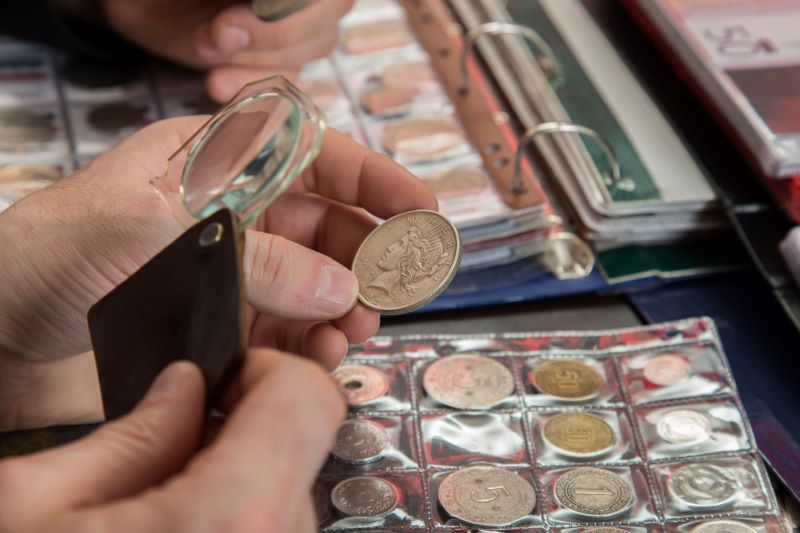
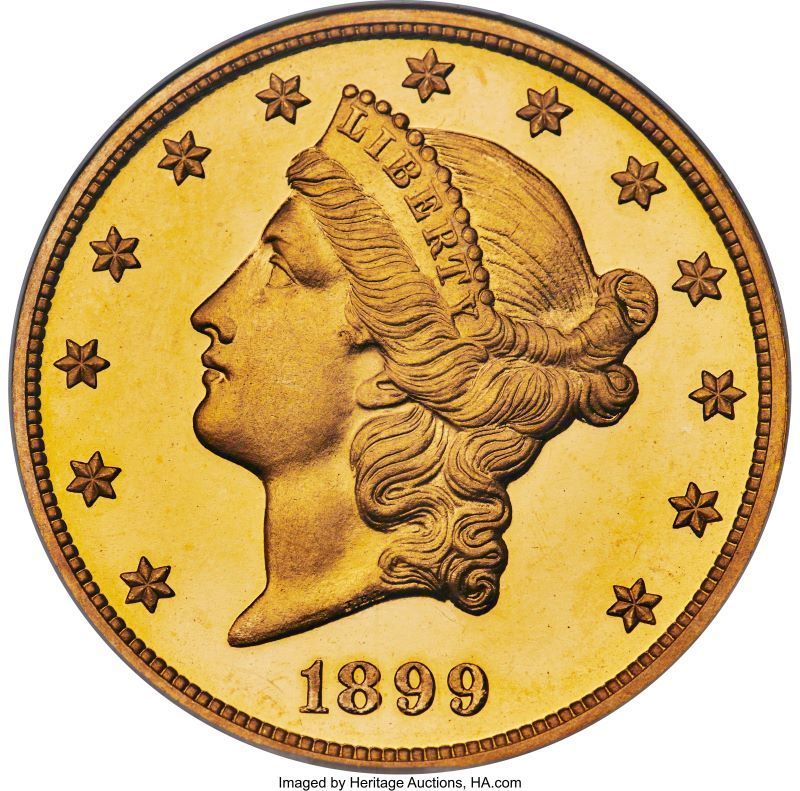

Never miss out on a deal
Sign up for our email list
Footer Subscribe Form
Thank you for subscribing!
Please try again later.
Licensed Numismatic Sales Company
License number : 40426862

